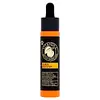What's inside
What's inside
 Key Ingredients
Key Ingredients

 Benefits
Benefits

 Concerns
Concerns

 Ingredients Side-by-side
Ingredients Side-by-side

Water
Skin ConditioningCannabis Sativa Seed Oil
EmollientPropanediol
SolventPolyglyceryl-6 Distearate
EmulsifyingSodium Ascorbyl Phosphate
AntioxidantGlycerin
HumectantTocopheryl Acetate
AntioxidantTapioca Starch
Caprylyl Glycol
EmollientSclerotium Gum
Emulsion StabilisingCetearyl Alcohol
EmollientPhenoxyethanol
PreservativePolyglyceryl-10 Stearate
Skin ConditioningSodium Metabisulfite
AntioxidantCitric Acid
BufferingSodium Hydroxide
BufferingPentaerythrityl Tetra-Di-T-Butyl Hydroxyhydrocinnamate
AntioxidantDilauryl Thiodipropionate
AntioxidantWater, Cannabis Sativa Seed Oil, Propanediol, Polyglyceryl-6 Distearate, Sodium Ascorbyl Phosphate, Glycerin, Tocopheryl Acetate, Tapioca Starch, Caprylyl Glycol, Sclerotium Gum, Cetearyl Alcohol, Phenoxyethanol, Polyglyceryl-10 Stearate, Sodium Metabisulfite, Citric Acid, Sodium Hydroxide, Pentaerythrityl Tetra-Di-T-Butyl Hydroxyhydrocinnamate, Dilauryl Thiodipropionate
Water
Skin ConditioningGlycereth-26
HumectantPropylene Glycol
HumectantPolysorbate 60
EmulsifyingDimethicone
EmollientSodium Ascorbyl Phosphate
AntioxidantButylene Glycol
HumectantPhenoxyethanol
PreservativeGlycerin
HumectantCaprylyl Glycol
EmollientCarbomer
Emulsion StabilisingXanthan Gum
EmulsifyingParfum
MaskingTerminalia Ferdinandiana Fruit Extract
AntioxidantAlcohol Denat.
AntimicrobialDisodium EDTA
Polyacrylamide
Sodium Hydroxide
BufferingLycium Barbarum Fruit Extract
AstringentBenzophenone-4
UV AbsorberC13-14 Isoparaffin
EmollientLaureth-7
EmulsifyingCitrus Grandis Fruit Extract
AstringentPotassium Sorbate
PreservativeSodium Benzoate
MaskingCI 15985
Cosmetic ColorantWater, Glycereth-26, Propylene Glycol, Polysorbate 60, Dimethicone, Sodium Ascorbyl Phosphate, Butylene Glycol, Phenoxyethanol, Glycerin, Caprylyl Glycol, Carbomer, Xanthan Gum, Parfum, Terminalia Ferdinandiana Fruit Extract, Alcohol Denat., Disodium EDTA, Polyacrylamide, Sodium Hydroxide, Lycium Barbarum Fruit Extract, Benzophenone-4, C13-14 Isoparaffin, Laureth-7, Citrus Grandis Fruit Extract, Potassium Sorbate, Sodium Benzoate, CI 15985
Ingredients Explained
These ingredients are found in both products.
Ingredients higher up in an ingredient list are typically present in a larger amount.
Caprylyl Glycol is a humectant and emollient, meaning it attracts and preserves moisture.
It is a common ingredient in many products, especially those designed to hydrate skin. The primary benefits are retaining moisture, skin softening, and promoting a healthy skin barrier.
Though Caprylyl Glycol is an alcohol derived from fatty acids, it is not the kind that can dry out skin.
This ingredient is also used as a preservative to extend the life of products. It has slight antimicrobial properties.
Learn more about Caprylyl GlycolGlycerin is already naturally found in your skin. It helps moisturize and protect your skin.
A study from 2016 found glycerin to be more effective as a humectant than AHAs and hyaluronic acid.
As a humectant, it helps the skin stay hydrated by pulling moisture to your skin. The low molecular weight of glycerin allows it to pull moisture into the deeper layers of your skin.
Hydrated skin improves your skin barrier; Your skin barrier helps protect against irritants and bacteria.
Glycerin has also been found to have antimicrobial and antiviral properties. Due to these properties, glycerin is often used in wound and burn treatments.
In cosmetics, glycerin is usually derived from plants such as soybean or palm. However, it can also be sourced from animals, such as tallow or animal fat.
This ingredient is organic, colorless, odorless, and non-toxic.
Glycerin is the name for this ingredient in American English. British English uses Glycerol/Glycerine.
Learn more about GlycerinPhenoxyethanol is a preservative that has germicide, antimicrobial, and aromatic properties. Studies show that phenoxyethanol can prevent microbial growth. By itself, it has a scent that is similar to that of a rose.
It's often used in formulations along with Caprylyl Glycol to preserve the shelf life of products.
Sodium Ascorbyl Phosphate is a form of Vitamin C. It is the salt of ascorbic acid.
This ingredient is more gentle than ascorbic acid. It is also more stable when exposed to light and oxygen.
Vitamin C helps reduce redness, improve skin texture, reduce the effects of aging, reduce the visibility of dark spots, and brighten skin.
Your skin uses Vitamin C to produce collagen and collagen production plays a role in having a strong skin barrier and plump skin. As an antioxidant, this ingredient also helps reduce the signs of aging such as fine-lines and wrinkles.
VItamin C helps brighten skin by blocking the process of skin darkening.
In a 2011 study, Sodium Ascorbyl Phosphate was found to have antibacterial properties. This may help treat acne.
Read more about other types of Vitamin C:
Learn more about Sodium Ascorbyl PhosphateSodium Hydroxide is also known as lye or caustic soda. It is used to adjust the pH of products; many ingredients require a specific pH to be effective.
In small amounts, sodium hydroxide is considered safe to use. However, large amounts may cause chemical burns due to its high alkaline.
Your skin has a natural pH and acid mantle. This acid mantle helps prevent harmful bacteria from breaking through. The acid mantle also helps keep your skin hydrated.
"Alkaline" refers to a high pH level. A low pH level would be considered acidic.
Learn more about Sodium HydroxideWater. It's the most common cosmetic ingredient of all. You'll usually see it at the top of ingredient lists, meaning that it makes up the largest part of the product.
So why is it so popular? Water most often acts as a solvent - this means that it helps dissolve other ingredients into the formulation.
You'll also recognize water as that liquid we all need to stay alive. If you see this, drink a glass of water. Stay hydrated!
Learn more about Water